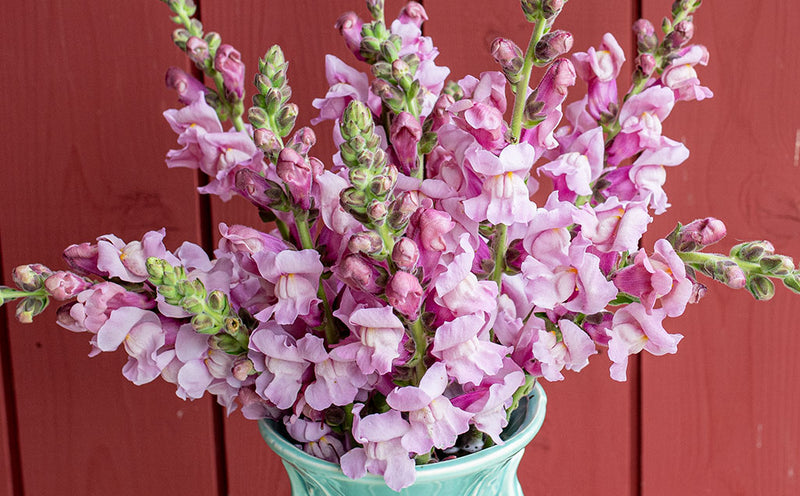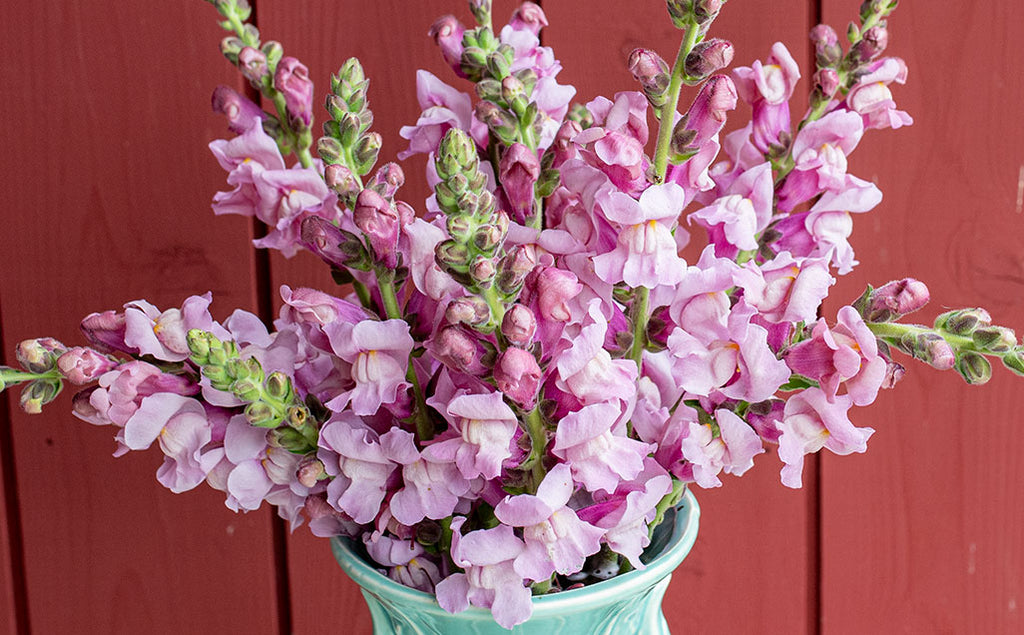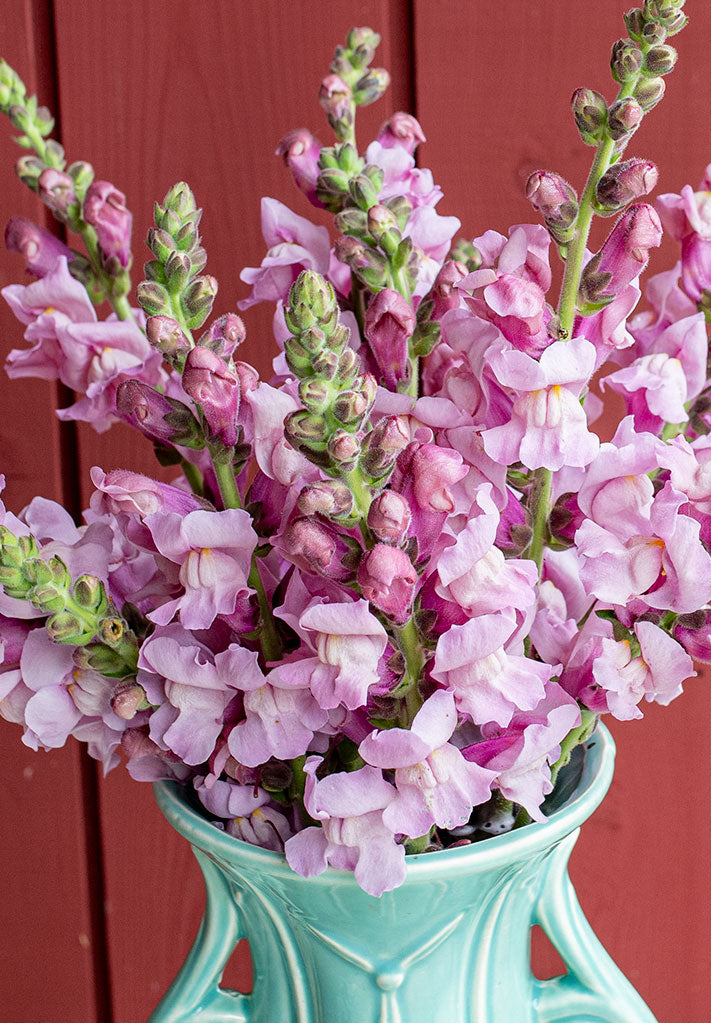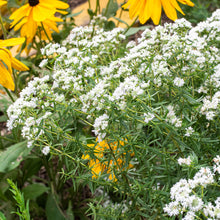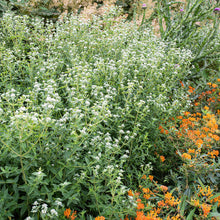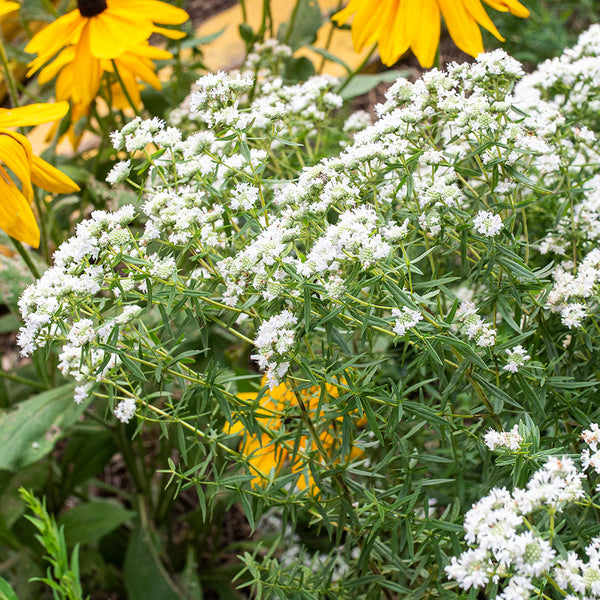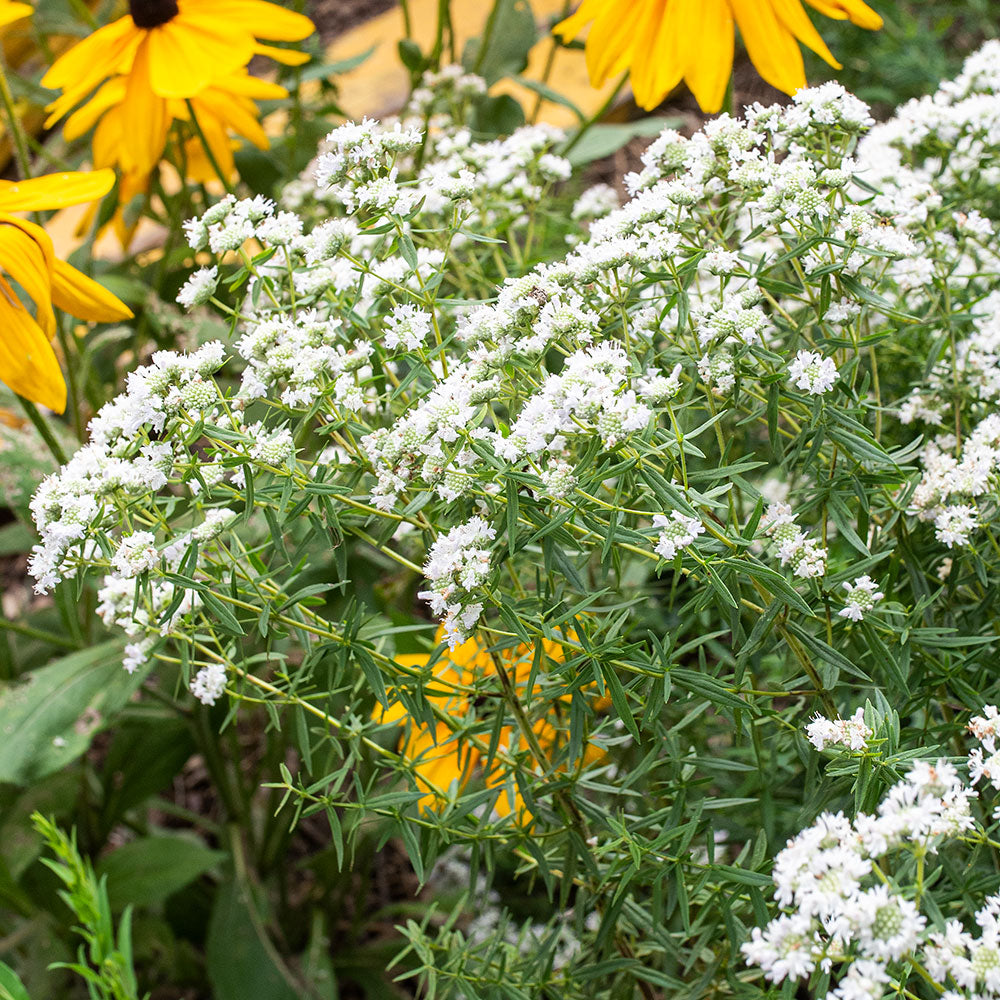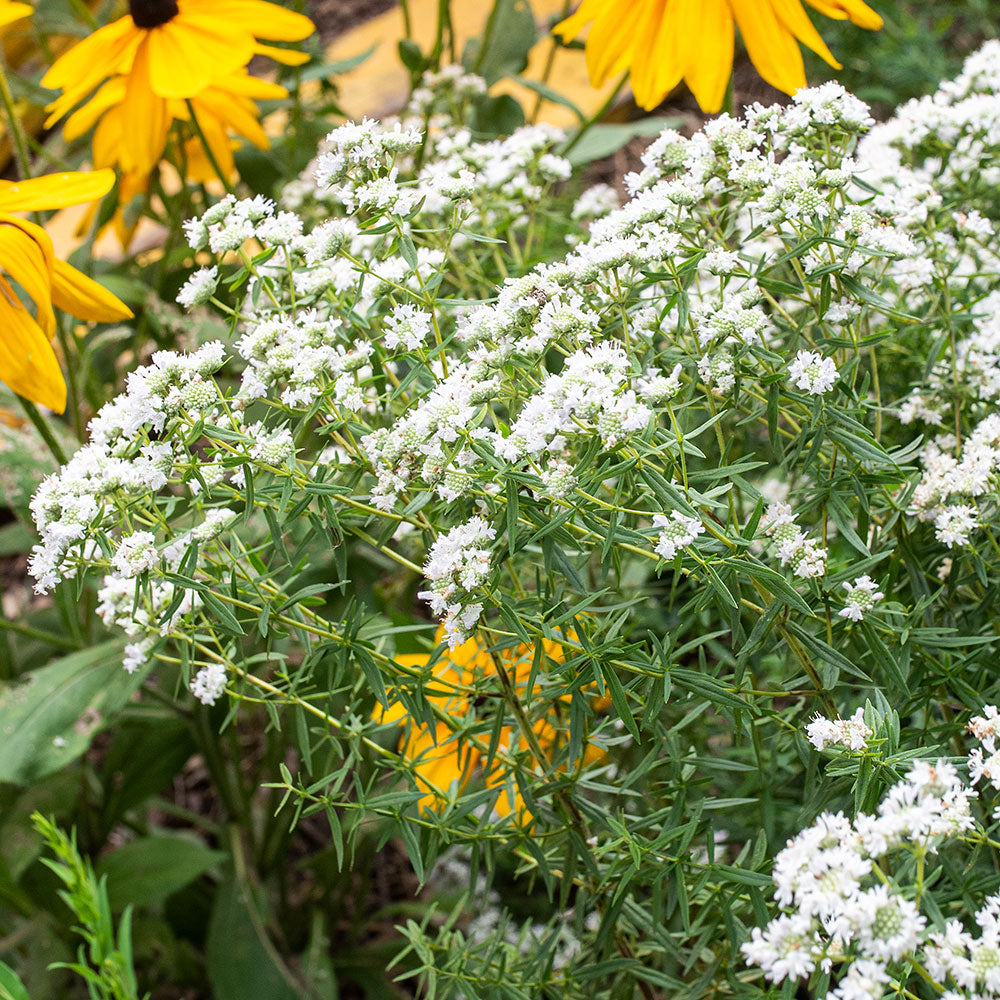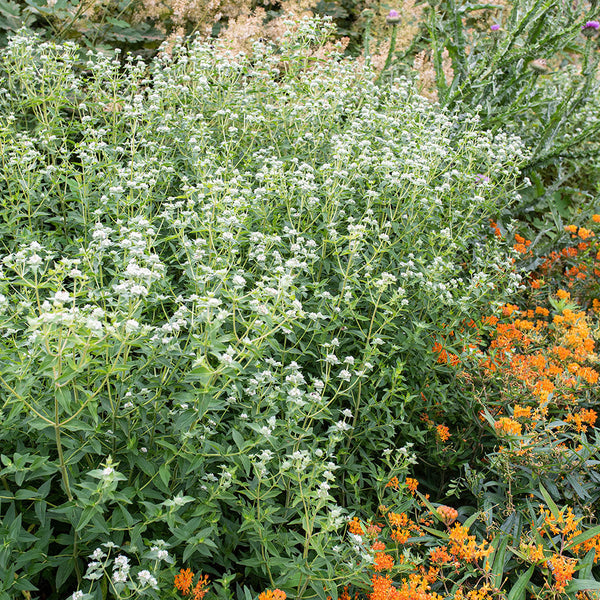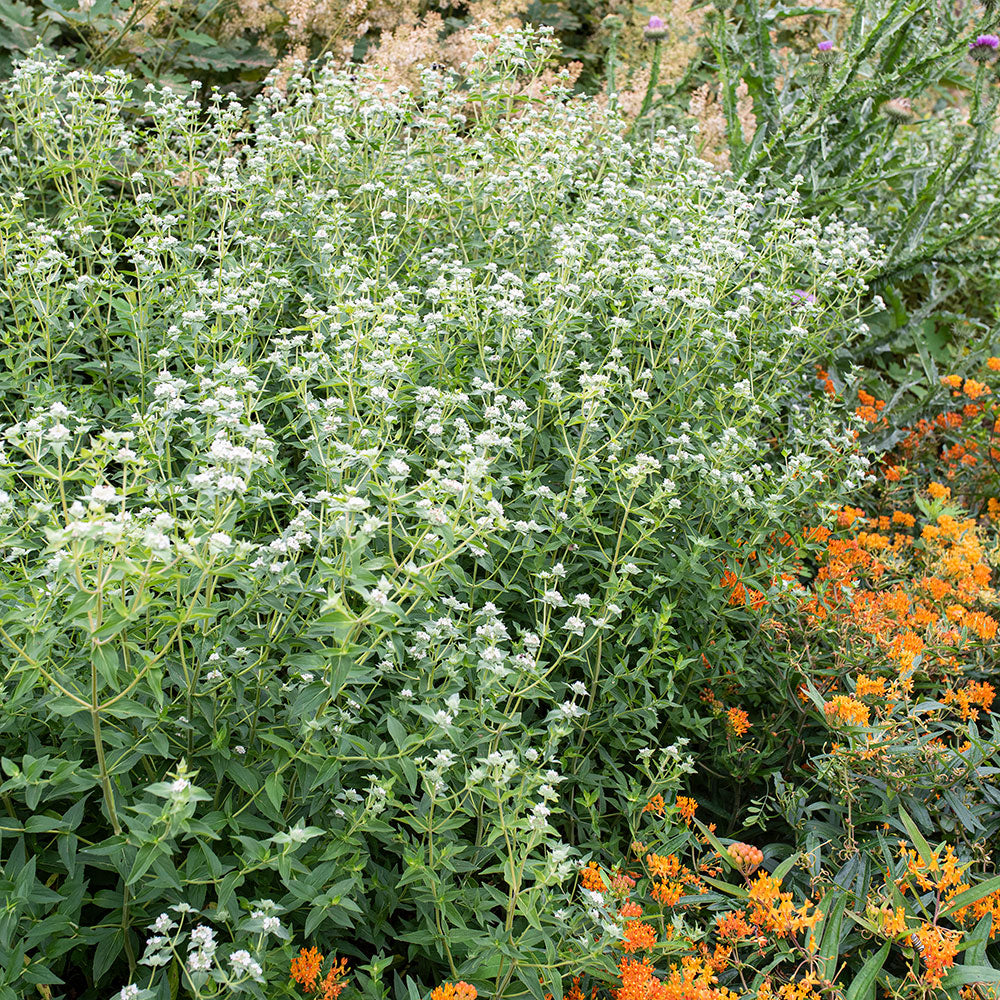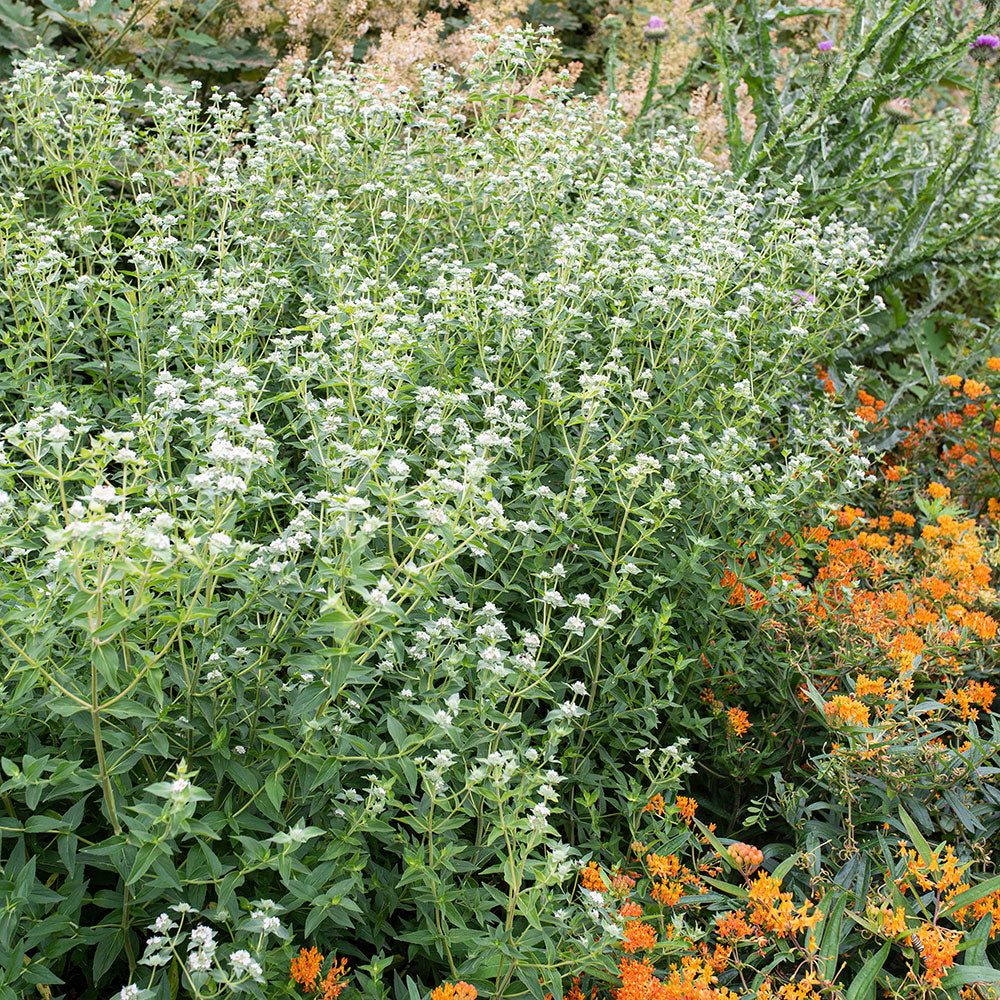Seed Packet
Mountain Mint - Virginia
Pycnanthemum virginianum
Native mountain mint is a fantastic pollinator-friendly plant that nurtures beneficial insects and butterflies with its generous clusters of bloom bursting with nectar and pollen. A member of the Lamiaceae family, the mints, its narrow dark green foliage possesses the pleasant scent of peppermint. Traditionally used by Indigenous people in the southeast as a remedy for coughs, today, it makes a lovely sight paired with bee balms in wild gardens, where it spreads moderately.
SKU #S1901
